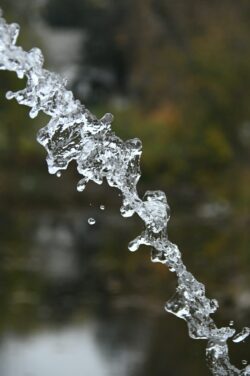Connecting the Dots: Contaminated Water and the Surge in Liver Diseases at Camp Lejeune
This article explores the potential risk to liver health posed by exposure to the contaminated water at Camp Lejeune.

Drawing on empirical research, it elucidates the link between toxic water and liver damage.
It also examines long-term health implications and evaluates treatment options for afflicted individuals.
Additionally, the article outlines preventative measures for safeguarding one's liver.
Key Takeaways
- Camp Lejeune's drinking water was contaminated between 1953 and 1987, leading to harmful chemicals in the water and allegations of military negligence.
- There is a correlation between exposure to the contaminated water and an increased incidence of liver diseases among residents during that period.
- Contaminated water can have long-term health implications, including liver damage, high death rates, and chronic liver conditions.
- Treatment options for liver damage from toxic exposure include mitigating adverse effects, detoxification therapies, herbal remedies, dietary changes, and medically supervised detox programs.
Understanding the Toxic Water Situation at Camp Lejeune

Investigation into the toxic water situation at Camp Lejeune reveals a disturbing scenario of potential health hazards, with particular emphasis on liver damage. This perilous situation is attributed to numerous harmful chemicals that contaminated the base's drinking water between 1953 and 1987 (Agency for Toxic Substances & Disease Registry, 2018). The key contaminants identified include volatile organic compounds such as trichloroethylene, tetrachloroethylene, benzene and vinyl chloride, all known hepatotoxins (National Center for Biotechnology Information, 2015).
In the context of military negligence, there have been allegations that officials were aware of the contamination but failed to take immediate action. A comprehensive report by the Government Accountability Office (GAO) in 2007 affirmed these claims, stating that despite being cognizant of the toxicity levels in drinking water as early as 1980-81, preventive measures were not implemented until six years later.
This delay had dire ramifications; studies revealed an increased incidence of liver diseases among those residing on base during this period (Environmental Health Perspectives Journal, 2006). Consequently, numerous legal remedies have been pursued by victims against both private contractors responsible for cleaning up the site and government entities. Notably, a federal law named 'The Janey Ensminger Act' was enacted in 2012 granting healthcare benefits to affected military personnel and their families.
These revelations underscore the necessity for stringent oversight mechanisms within military establishments to prevent future instances of such negligence. Moreover, they highlight the critical role legal systems play in providing justice for victims while holding accountable those responsible.
The Connection Between Contaminated Water and Liver Damage

Extensive research has established a correlation between exposure to polluted fluids and the development of hepatic impairments. A plethora of studies indicate that the ingestion or inhalation of toxic substances in water can lead to liver toxicity symptoms (Liu et al., 2016). These symptoms often manifest as jaundice, abdominal pain, and fatigue, which are indicators of liver damage or disease.
Waterborne disease risks rise significantly with an increase in pollution levels. In fact, according to the World Health Organization (WHO), unsafe water is responsible for approximately 3.4 million deaths each year due to diseases like cholera, dysentery, typhoid, and polio (WHO Report, 2018). Studies have also linked long-term exposure to contaminated water with chronic liver conditions such as cirrhosis and hepatocellular carcinoma (Ratnaike, 2003).
In the case of Camp Lejeune's toxic water situation specifically - where residents were unknowingly exposed to harmful chemicals from military waste dumping - there appears a likely connection between this contamination and increased reports of liver disease among those who lived there during the period in question (Maslia et al., 2016). The exact health consequences may vary depending on factors such as duration and extent of exposure; however, it is clear that regular consumption or contact with such polluted fluids poses significant risk to liver function.
This evidence emphasizes the need for rigorous environmental standards for ensuring safe drinking water quality globally. It also underlines the importance of early detection measures for potential health complications arising from historical incidences of large-scale contamination.
Health Implications of Long-Term Exposure to Toxic Water

Long-term exposure to contaminated fluids can lead to a myriad of health complications, including but not limited to gastrointestinal issues, neurological disorders, and various forms of cancer. Particularly, environmental pollutants in water such as heavy metals, pesticides and industrial solvents pose significant threats to human health (Naujokas et al., 2013).
Household toxins, often unnoticed due to their ubiquity in daily life, are another noteworthy source of harmful substances that could contaminate water supplies (Zota et al., 2018). These include cleaning products with volatile organic compounds or beauty products containing endocrine-disrupting chemicals which can seep into groundwater or household plumbing over time.
The body's primary detoxifying organ - the liver - bears the brunt of these contaminants. As these toxins are ingested via polluted drinking water they pass through the digestive system before reaching the liver. Here they can cause long-term damage leading to conditions such as cirrhosis and liver cancer (Bassig et al., 2017).
Moreover, neurotoxicants found in polluted water have been linked with developmental issues in children and cognitive decline in adults (Grandjean & Landrigan, 2006). Similarly, certain carcinogenic compounds commonly found in contaminated water like arsenic and benzene have been associated with an increased risk of various types of cancer (Cantor et al., 2010; Richardson et al., 2007).
Treatment Options for Liver Damage Caused by Toxic Exposure

Treatment strategies for organ damage resulting from prolonged exposure to harmful pollutants primarily focus on mitigating the adverse effects and repairing the affected tissues. Detoxification therapies and herbal remedies have been identified as potential treatment options in managing liver damage caused by toxic exposure.
Detoxification therapies involve flushing out toxins from the body, with the goal of improving liver function and reducing symptoms related to toxicity (Mills et al., 2014). These therapies may include dietary changes, targeted nutritional supplements, or medically supervised detox programs. While empirical evidence supporting their efficacy varies considerably, anecdotal reports suggest that they may provide relief for some individuals (Klein & Kiat, 2015).
Herbal remedies are another treatment approach being explored due to their potential hepatoprotective properties. Silymarin derived from milk thistle is one such remedy that has shown promise in several studies (Abenavoli et al., 2018). It is thought to promote liver cell regeneration, reduce inflammation and oxidative stress – all factors implicated in toxin-induced liver damage.
However, it is important to remember that while these treatments can support liver health, they cannot reverse severe organ damage. Furthermore, relying solely on these methods without addressing the source of toxic exposure could potentially exacerbate health risks. Therefore, an integrated approach involving medical supervision alongside these alternative treatments is advisable.
Prevention Measures and How to Protect Your Liver

Prevention measures against organ damage due to hazardous exposure encompass a range of strategies, including lifestyle modifications and protective workplace practices. The liver, as a vital organ that filters toxins from the body, requires special care (Sies et al., 2018). Avoidance of harmful substances forms an integral part of these preventive steps.
Toxin avoidance involves both individual choices and environmental factors. On a personal level, minimising consumption of alcohol and fatty foods reduces the burden on the liver (Sies et al., 2018). In occupational settings, adherence to safety protocols protects workers from exposure to harmful chemicals (Rusyn & Bataller, 2013).
Liver cleansing is another key strategy in this prevention matrix. Detoxification diets have gained popularity but their effectiveness remains under scrutiny (Kim et al., 2015). However, evidence suggests that regular intake of fruits and vegetables rich in antioxidants can support liver function by neutralising harmful free radicals (Wang et al., 2016).
Furthermore, adequate hydration aids the natural detoxification process while regular exercise improves blood circulation thus promoting toxin elimination through sweat (Bishehsari et al., 2017; Rusyn & Bataller, 2013).
Frequently Asked Questions
What Other Health Conditions Apart From Liver Damage Can Be Caused by Exposure to Camp Lejeune’s Toxic Water?
Exposure to Camp Lejeune's toxic water can result in various health conditions, including kidney disease, neurological disorders, and cancers. Contamination symptoms require prompt diagnosis for effective toxicity treatments to mitigate long-term damage.
How Does the Severity of Liver Damage Vary Depending on the Length and Intensity of Exposure to the Contaminated Water?
The severity of liver damage escalates with increased exposure durations and higher toxicity levels in contaminated water. Prolonged, intense contact heightens risk of severe conditions, including cirrhosis and hepatocellular carcinoma (HCC).
Are There Any Legal Actions or Compensations for the Victims of the Camp Lejeune Toxic Water Situation?
Legal precedents exist for victims of environmental hazards, including Camp Lejeune. Compensation eligibility depends on evidence linking health issues to toxic exposure. The U.S government has acknowledged responsibility and provides healthcare benefits and disability compensation.
How Does the Toxic Water at Camp Lejeune Compare to Other Similar Situations Globally?
Comparative analysis of global contamination incidents reveals varying impacts. The toxicity level at Camp Lejeune is significant, mirroring severe cases worldwide, yet unique factors contribute to its distinct environmental and health consequences.
What Steps Are Being Taken to Prevent Future Occurrences of Water Contamination at Camp Lejeune?
Efforts to prevent future water contamination at Camp Lejeune encompass stringent Contamination Monitoring and application of advanced Remediation Techniques. These steps are aimed at ensuring the safety and health of its residents.
Conclusion
In conclusion, research reveals a strong correlation between long-term exposure to the contaminated water at Camp Lejeune and liver damage. This emphasizes the importance of implementing prevention measures for mitigating risks of toxic exposure.
Further investigations are necessary to develop more effective treatment options for those affected. The situation underscores the critical need for continuous monitoring and regulation of water quality in military camps to safeguard the health of personnel.

This post has been generated by AI and was not reviewed by editors. This is Not legal advice. Please consult with an attorney.




